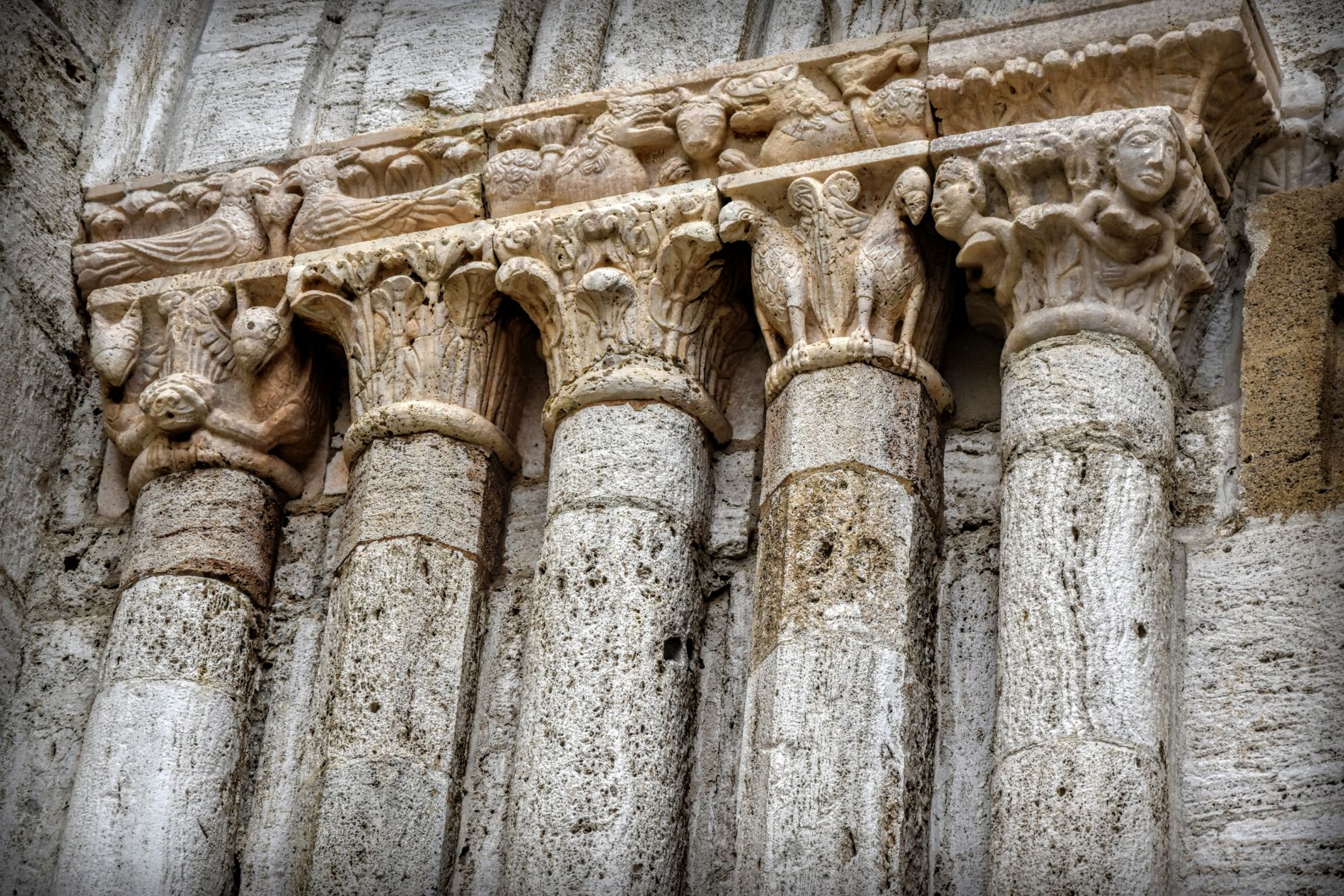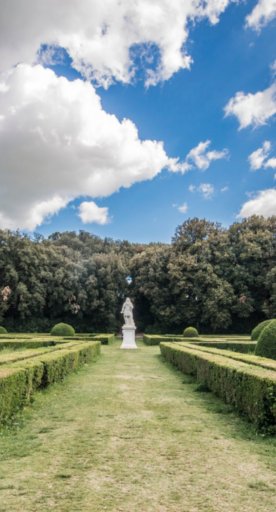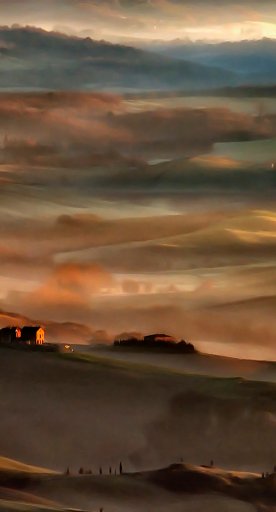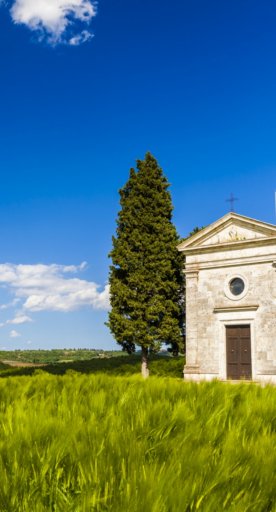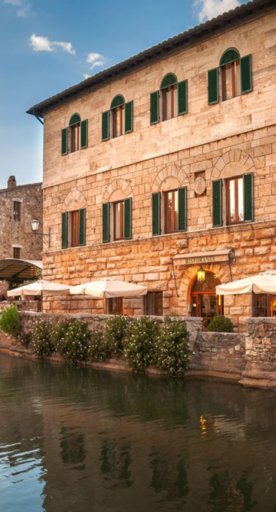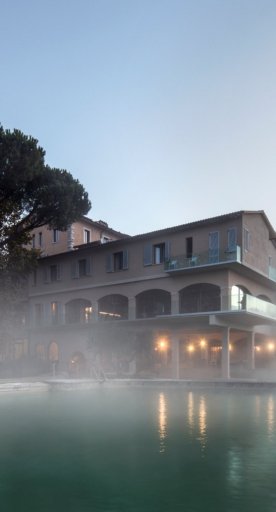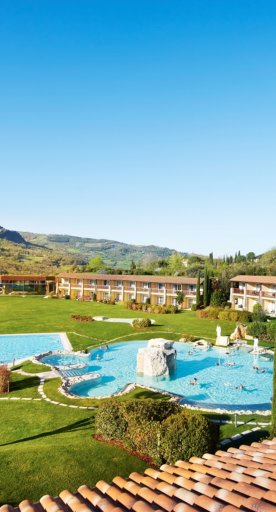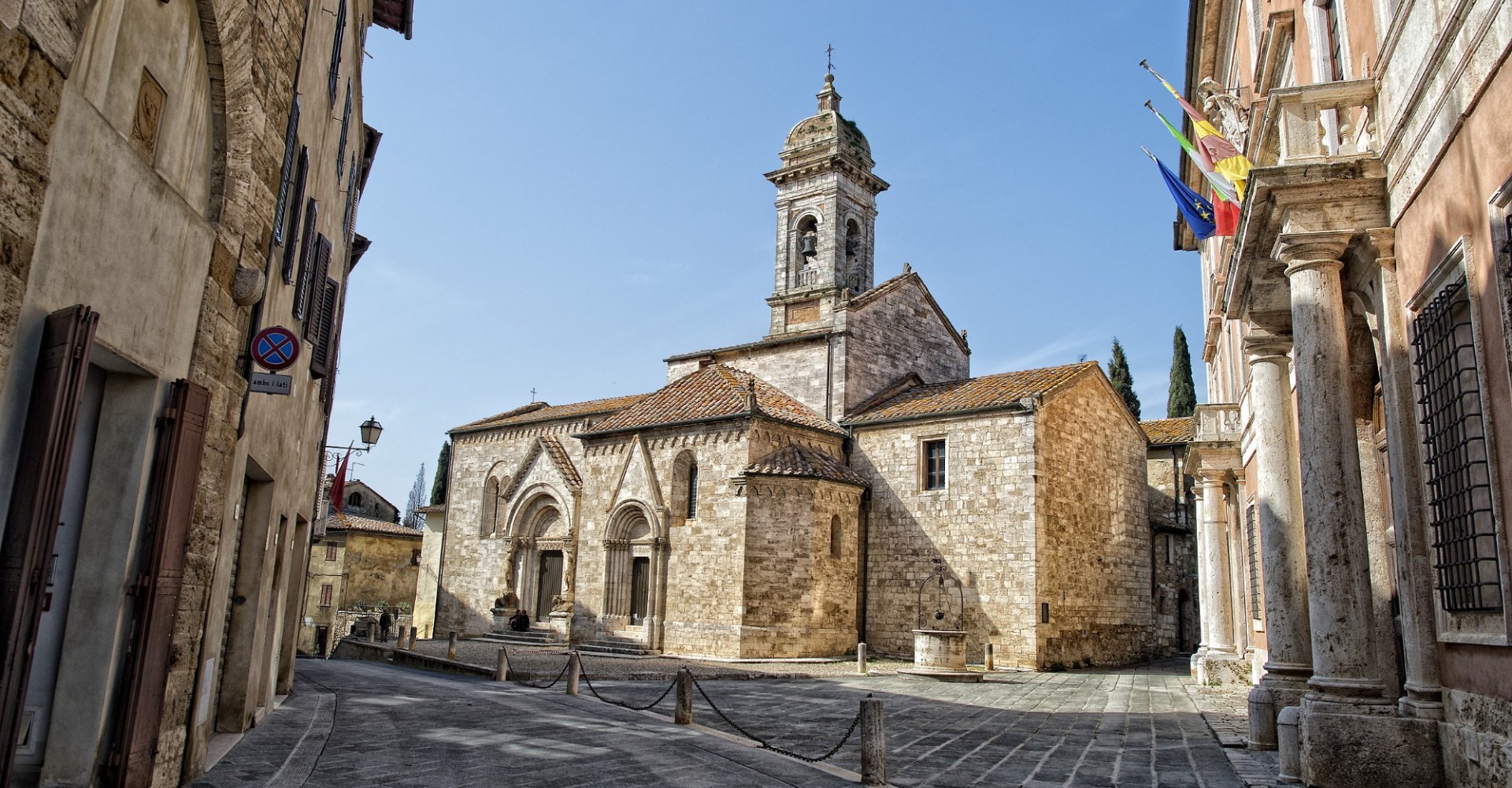
Collegiate Church of San Quirico d'Orcia
Along the Via Francigena, a historic Romanesque church filled with works of art
The Collegiate Church of Saints Quirico and Giulitta, known as the Collegiate Church of San Quirico d’Orcia, is a wonderful Romanesque style church built on the remains of an ancient parish church.
This is why it contains three very different entrances. The main one is in Romanesque style and dates back to the 12th century. It has a large arch supported by a pair of columns resting on two lions. On the architrave, you can admire two crocodiles facing each other, while the figure of San Quirico himself is carved in the lunette.
On the right side of the church, we find two other side entrances that were added later, right on the road where the Via Francigena passes.
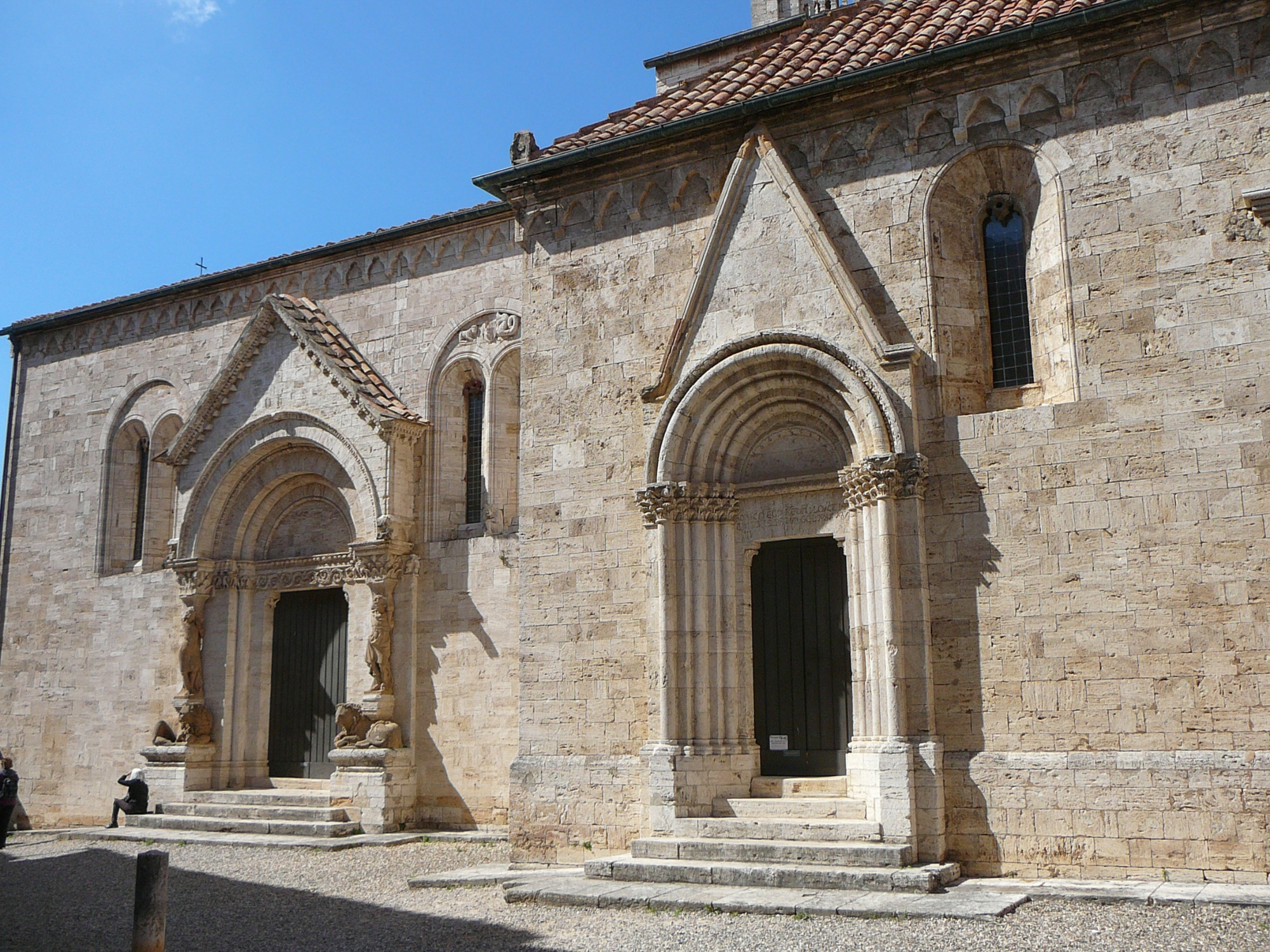
The first was erected in Lombard style in the 13th century and is supported by two caryatid standing on two lions. Built in 1288, it is generally attributed to Giovanni Pisano, who was in Siena at the time working on the Cathedral, because the cusp of the portal bears the inscription in Gothic characters "Iohes", which may refer to the sculptor's name. The third portal dates to 1798 and vaunts a combination of Romanesque and Gothic elements.
The large 15th-century altarpiece by Sano di Pietro is splendid, depicting the Madonna and Child Enthroned with Angels and Saints and some scenes from the life of the Virgin Mary.
The wooden choir of Antonio Barili
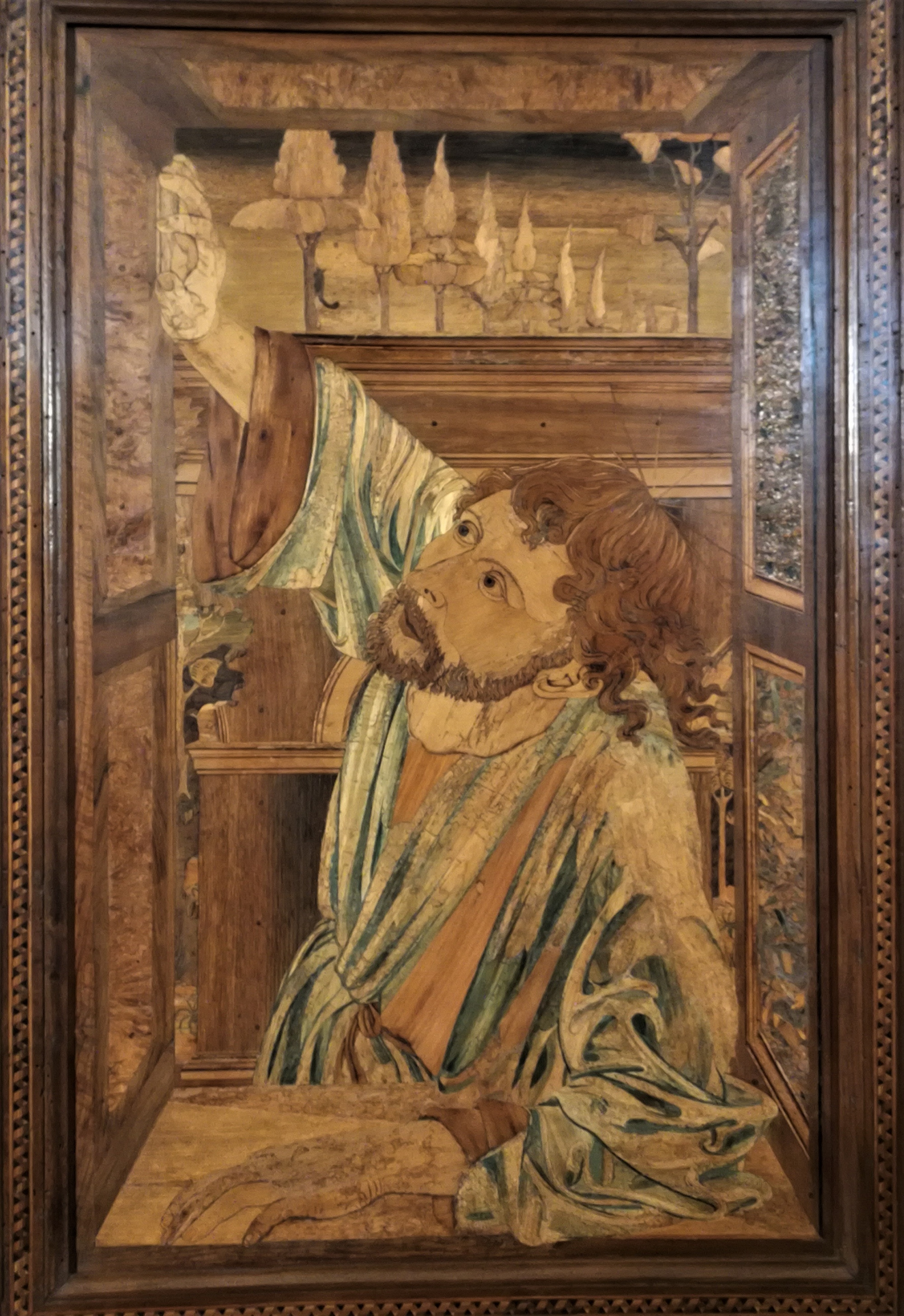
Inside the Collegiate Church of San Quirico d'Orcia you'll find the wooden choir by Antonio Barili, a work created for the Cathedral of Siena in the period between 1483 and 1504 and transferred here in 1749, thanks to the interest of Flavio Chigi. There were originally nineteen panels placed behind the main altar, each decorated with different figures.
Above the panels, there was an architrave, with a frieze decorated with animal and vegetable motifs above it. The top was enclosed by a cornice. In the seven surviving panels inside the Collegiate Church, we can still observe this structure, but we can only imagine how elaborate it was before the choir was dismantled and dispersed.
The work can be defined as extraordinary in several respects. First of all, for the artistic quality of the inlays in which Barili evoked the effect of colour in a pictorial connotation through the use of wood. It is also a historical document since this work gives us a closer insight into the carver's craft.
Finally, it's possible to consider the choir as an attempt for third dimension, with chiaroscuro obtained through combinations of small portions of wood of different shades and subtle incisions that recreate curls and locks of hair.
